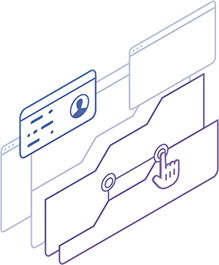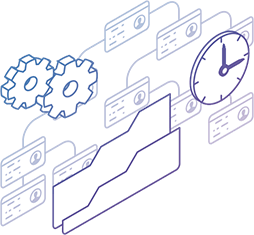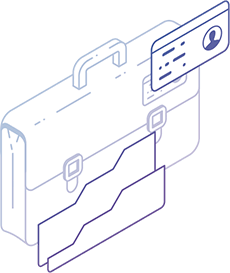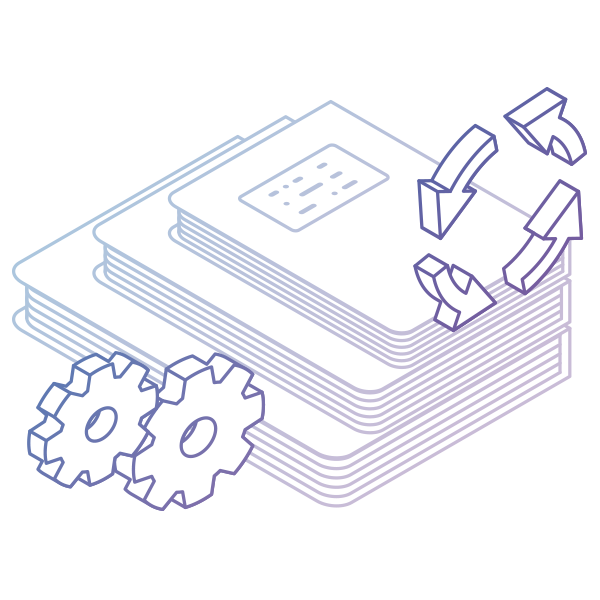Preventing a wildfire is always easier than putting it down. Similarly, building quality into products from the start is more efficient and effective than patching the issues after they cause damage.
Unlike traditional management, that is exactly how Lean Management proactively addresses quality management with continuous improvement tools.
Reactive vs. Proactive Quality Management

To understand how to build quality into our products from the very beginning, we need to understand why this is not happening naturally.
The most common way of preventing defects from reaching customers comes down to introducing a great number of inspections and countless KPIs or metrics into the process.
The problem with this approach is that it is reactive. And wasteful.
If we think in the context of the value streams, neither inspections nor metrics add any value to the customer. At best, they help you discover and react to already produced defects. At worst, they encourage playing the system – you get what you measure.
Now, don’t get it wrong, both KPIs and inspections are undoubtedly useful and necessary quality management tools. The problem is that they do not actually prevent quality defects from happening, so relying on them alone to produce quality is just not enough.
In the end, reactive quality management makes us generate more associated costs and still get plenty of bugs in our code or defects in our products.
That being said, how do we shift to proactive quality management?
Establishing a Quality Culture

The way Lean management views the issue of quality and defects is through the lens of value and continuous improvement.
In fact, built-in quality is a natural outcome of successful company-wide adoption of continuous improvement mentality and Lean principles.
After a team develops a Lean mindset, continuous improvement becomes the glue that holds everything together. Every Lean management principle gets translated into action, influencing the way quality is perceived throughout the product development process.
-
Value-centered mindset means everything you do needs to be bringing value to your client. Your client is anyone who receives the deliverable of your work.
-
Waste-conscious thinking helps remove whatever is not adding or supporting value. This results in fewer redundant metrics or steps in a process.
-
Continuous flow of work encourages working in smaller batches. This reduces the risk of larger defects, makes fixes easier and establishes a smooth delivery flow.
-
Bottlenecks are removed or guarded for the sake of the flow. If a work stage adds a lot of value but takes too much time, the cost of delay for the rest of the process might overcome this value.
-
Pull-powered flow means efforts and resources should not get invested into the things irrelevant to your stakeholders.
-
Upstream leadership empowers the person who is doing the work to elevate issues, letting you cut the root issues.
-
Analysis and continuous improvement. Applying the Lean principles once won’t do the trick. Continuously analyze your work, outcomes, mistakes, and build on that.
Thinking about your work in the context of the value stream and the team's workflow, department, or even company affects how you view your work and prioritize tasks.
Turning Principles into Practices

The proactive quality improvement process starts working when everyone on the team (including the leaders) starts thinking about their work in the context of Lean values.
The continuous improvement culture needs to start influencing every work process, decision, and policy that shapes the workflow and the quality control system.
Here is how this mental paradigm and principles can be translated into practical workflow policies that build quality at every stage of work:
-
Do not accept/build/ship a defect – defects are not to be consciously created, allowed to progress through the process, or delivered to the customer. The goal is zero in-process waste.
-
Defects can’t leave the station/team/person – any quality issues are resolved at the same stage of work where they are created/discovered.
-
Self-organized teams proactively take action whenever it is necessary to fix an issue, re-distribute work or resources. If needed, a team or individual can elevate an issue and stop the process for the sake of efficient resolution.
-
Standardized work processes, quality, explicit policies give clear definitions. The value and quality become fundamental business requirements that are properly communicated and expected at every stage of the workflow.
-
The leadership appreciates continuous improvement suggestions. Bringing up problems and suggesting solutions is highly encouraged despite your position or rank.
For example, in the software development industry, many bugs discovered in quality assurance processes turn out extremely small and easy to prevent. The fact these basic bugs are discovered at the testing stage shows the developers did not perform primary quality check of their work.
In turn, this wastes the time of both testers and developers, creating unnecessary iterations and stealing the attention from the more important issues.
Applying proactive continuous quality improvement principles here means everyone in the development teams starts thinking about the value on the level of the whole flow.
Every time a task goes back into re-iteration solely because of negligence – it is a waste.
Some waste is unavoidable, but when you proactively seek improvement opportunities, you try to minimize the preventable waste.
That’s how proactive quality policies and culture make a feasible difference. Failed inspections or tests help us signal issues and show where improvement is needed.
However, continuous improvement sets both the prerequisites for success and the principles for actions when things do not work.
Business Benefits of Continuous Quality Improvement

As soon as you let the value-centered mentality and continuous improvement practices guide your quality management efforts, you’ll discover many strong benefits:
- The fact that no issues are passed down the chain results in less time wasted throughout the workflow on fixing preventable defects.
- The less time your work spends in reiterations and inspections, the bigger gets the whole production flow's capacity.
- In combination with self-organized teams, built-in continuous quality improvement principles reduce the need for some tests and inspections.
- Quicker total delivery time and a higher quality result in lower total production costs and higher profit margin.
The key is the continuous nature of this improvement. Lean principles and practices are not a one-time checklist but an ongoing effort.
In the beginning, the Lean transformation leaders will need to be coaching and teaching the team.
However, as the team reaches higher levels of work culture maturity, they would need less and less management involvement.
We offer the most flexible software platform
for outcome-driven enterprise agility.
In Summary
With continuous improvement at the core of your production process, the quality will get built-in from the start. Moreover, you’ll need fewer resources to deliver much more value. All of that with less strain on the workers and the production process.
- Building quality in requires the adoption of the Lean continuous improvement values.
- Continuous improvement is the engine powering the Lean quality management system.
- Proactive Lean quality improvement means lower costs and higher quality from the start.












